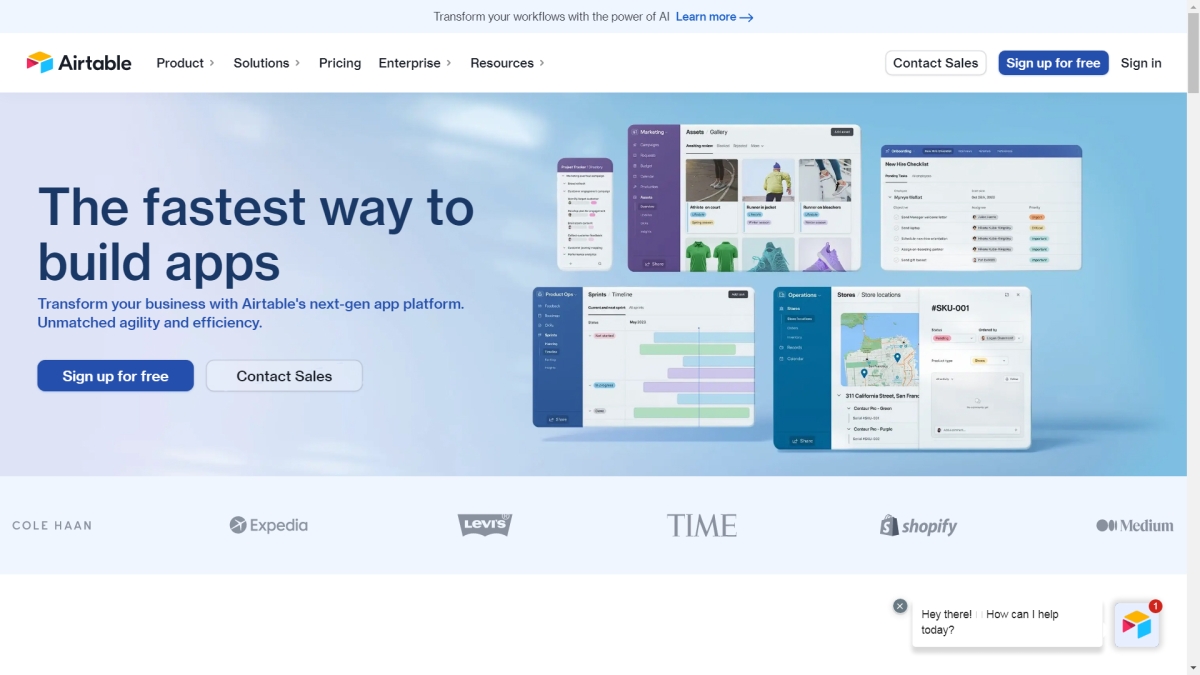Airtable: Bridging the Gap Between Spreadsheets and Databases for Streamlined Work Management

Airtable, a cloud-based collaboration platform, has emerged as a versatile and user-friendly solution that bridges the gap between traditional spreadsheets and complex databases.
With its flexible and customizable features, Airtable has gained popularity among diverse industries as an all-in-one tool for work management.
Understanding Airtable
Airtable was founded in 2012 by Howie Liu, Andrew Ofstad, and Emmett Nicholas with the vision of transforming the way teams handle data and work processes. The platform combines the simplicity of a spreadsheet with the capabilities of a relational database, offering a visually appealing and user-friendly interface.
Key Features and Functionality:
Flexible Data Organization
Airtable allows users to create "bases," which are similar to databases, to organize and store various types of information. Each base consists of tables with customizable fields that can include text, numbers, attachments, checkboxes, and more.
Visual Interface
The platform's visual approach enables users to view and interact with data in a visually appealing manner, providing a more intuitive experience than traditional databases.
Customizable Workflows
With the ability to create custom views, filters, and sorting options, Airtable empowers users to design workflows that match their specific needs, whether it's project management, content planning, inventory tracking, or any other data-intensive process.
Collaboration and Sharing
Airtable promotes seamless collaboration by allowing team members to work together in real-time, leave comments, and receive notifications on updates. Bases can also be shared with external collaborators for enhanced teamwork.
Integration Capabilities
The platform offers a wide range of integrations with other popular tools and services, enabling data synchronization and enhancing productivity by connecting workflows across different applications.
Automation
Airtable's automation features, powered by the "Automations" tool, help users streamline repetitive tasks and maintain consistency in their workflows.
Benefits of Using Airtable:
Simplicity and User-Friendly Design
Airtable's intuitive interface makes it accessible to both technical and non-technical users, reducing the learning curve and facilitating faster adoption.
Versatility
Airtable's flexibility allows businesses to adapt the platform to various use cases, ranging from simple task tracking to complex project management and beyond.
Enhanced Collaboration
Real-time collaboration and the ability to share bases with external partners foster improved teamwork and transparency.
Data Centralization
By consolidating data in one place, Airtable eliminates data silos, ensuring that teams have a single source of truth for information.
Cost-Effectiveness
Airtable's pricing model is competitive compared to traditional database software, providing excellent value for the functionality it offers.
Airtable has emerged as a powerful work management tool that empowers businesses to organize, collaborate, and automate their data-intensive processes effectively.
By blending the simplicity of spreadsheets with the capabilities of databases, Airtable provides a versatile platform that is easily customizable to match the unique needs of different industries and use cases.
As more organizations recognize the value of streamlined work management and efficient collaboration, Airtable is poised to continue its growth and remain a valuable asset for teams across the globe.
Whether it's small startups or large enterprises, Airtable's user-friendly approach is transforming the way businesses handle data, fostering productivity, and driving success in today's competitive landscape.
References:
https://facebook.com/airtableapp
https://linkedin.com/company/airtable
https://instagram.com/airtable
https://www.youtube.com/c/AirtableApp